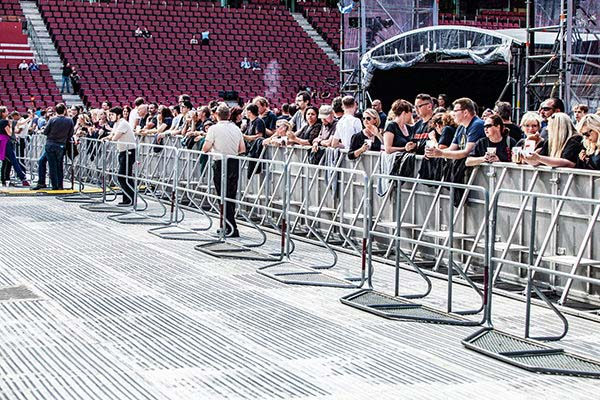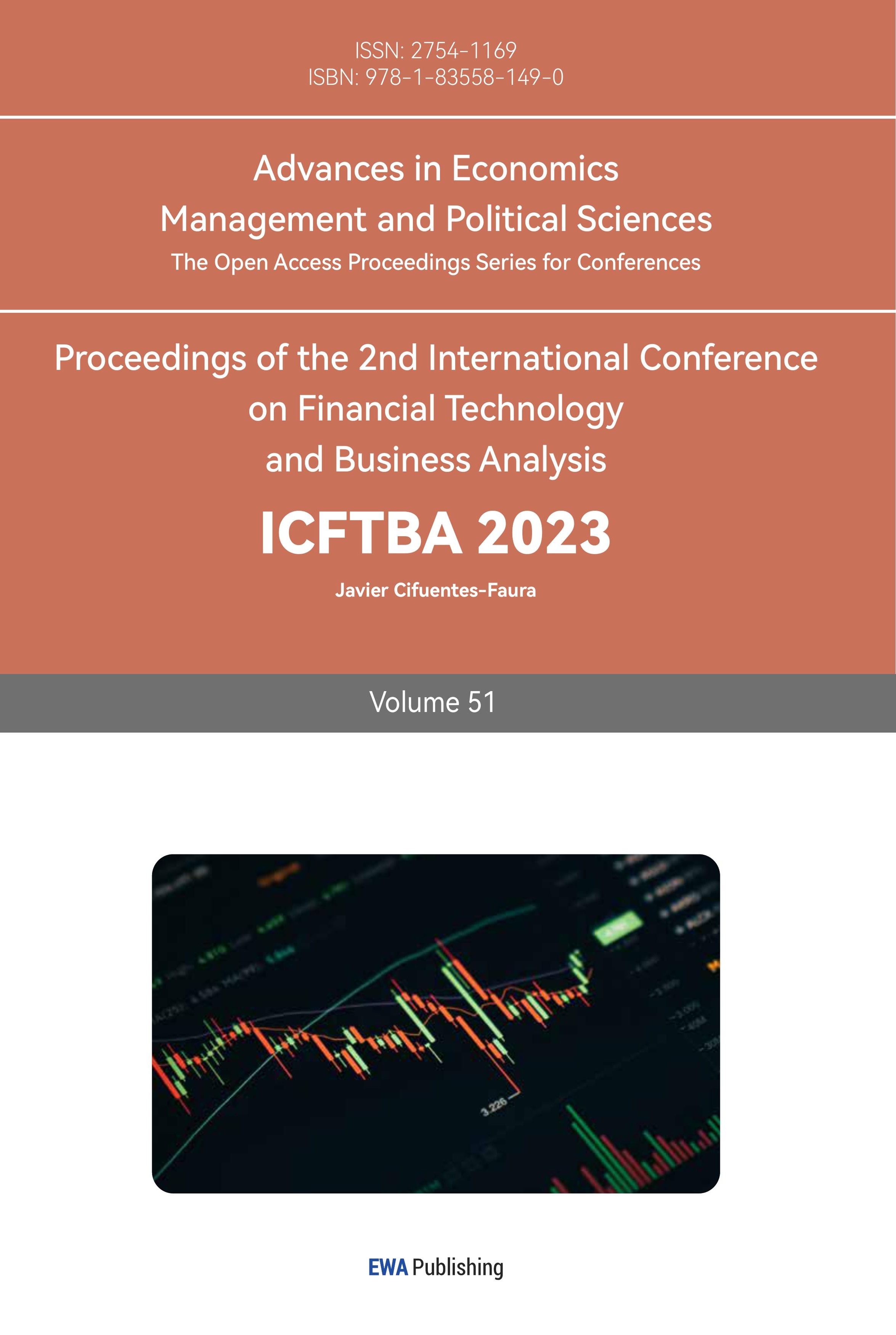1. Introduction
In the June 15th Argentina vs Australia international football friendly game held at the Workers' Stadium in Beijing, China, an extreme fan rushed onto the field, hugged Messi, and ran around the pitch for a lap. This incident has sparked widespread discussions on social media, and such occurrences are relatively common in the history of football. This study started to research about the famous sport accident cases around the globe, including UEFA Euro 2016 final, FIFA World Cup 2018, Hillsborough Disaster (1989), Bradford City Stadium Fire Tragedy (1985) and The marathon stampede in Baiyin, Gansu Province, China (2021).
Due to the large number of participants and the extremely high emotions of the audience, these sports events will face unpredictable risks in the organization and hosting of events in most cases. Potential risks in major sports events reveal a range of threats that can impact safety, public order, infrastructure, and reputation. Safety risks encompass factors such as crowd control, medical emergencies, and the possibility of terrorist attacks or acts of violence. Additionally, the reputation of the event and its organizers can be compromised by risks such as corruption, doping scandals, or inadequate event planning. Understanding and mitigating these risks is crucial for ensuring the successful execution of major sports events and maintaining a secure and enjoyable experience for participants and spectators alike.
Below are three case studies of catastrophic cases in sports events as representatives of execution risks.\
2. Case study: Execution Risks in Major Sports Events
First case-Hillsborough Disaster (1989): On April 15, 1989, during a football match between Sheffield Wednesday and Liverpool at Hillsborough Stadium in England, a severe crash occurred, resulting in the deaths of over 96 people and hundreds of injuries. This event is considered one of the worst tragedies in British football history. It was learned from this case that security personnel failed to adequately control the crowd, leading to overcrowding in the stands. Insufficient safety exits and inadequate evacuation plans resulted in the stampede spiraling out of control, causing mass casualties [1].
Second case-Bradford City Stadium Fire Tragedy, UK (1985): On May 11, 1985, a fire broke out at Bradford City's Valley Parade Stadium in the UK, resulting in 56 deaths and several hundred injuries. The rapid spread of the fire and the subsequent trapping of spectators and staff were attributed to the lack of effective fire prevention and emergency evacuation facilities. It was learned from this case that the absence of proper fire prevention measures and emergency evacuation plans allowed the fire to spread quickly, resulting in significant loss of life. Security personnel failed to promptly guide the safe evacuation of spectators, leading to confusion and overcrowding [2].
Third case- The marathon stampede in Baiyin, Gansu Province, China (2021): On May 22, 2021, the 2021 (fourth) Yellow River Shilin Mountain Marathon 100-kilometer cross-country race and Rural Revitalization Health Run were held in the Yellow River Shilin Grand Scenic Spot, Jingtai County, Baiyin City. During the race, public safety incidents occurred due to sudden cooling, precipitation, and high-impact weather, resulting in the death of 21 participants and eight injuries. In China, accidents with more than ten deaths and fewer than 30 deaths are considered "major safety accidents." Due to the negligence of the organizers in the preliminary environmental investigation of the event and the inadequate preparation for the emergency plan, the participants suffered a sudden disaster.
3. Pre-Event Risk Assessment and Planning
3.1. Risk Assessment Methodologies
Risk assessment enables event organizers to identify, analyze, and prioritize risks that may impact the safety, public order, infrastructure, and reputation of the event. By employing various established methodologies, such as Hazard Identification and Risk Assessment (HIRA) or Bowtie analysis, event organizers can assess a wide range of factors, including crowd behavior, terrorism threats, infrastructure vulnerabilities, and reputational risks. These methodologies provide a structured approach to gathering relevant data, conducting historical analysis, and engaging subject matter experts to identify and evaluate potential risks. The findings from risk assessments serve as a foundation for developing targeted security strategies, allocating resources effectively, and implementing preventive measures to mitigate identified risks. Furthermore, risk assessment methodologies aid in the formulation of robust emergency response protocols, ensuring that event organizers are well-prepared to address and manage unforeseen circumstances [3].
3.2. Stakeholder Involvement
Stakeholder involvement is crucial as it brings together the collective expertise, resources, and responsibilities of different entities involved in the event. Event organizers, government agencies, and security experts collaborate to assess potential risks, develop comprehensive security plans, and implement effective security measures. This collaboration enables the sharing of information, coordination of efforts, and allocation of resources in a coordinated manner. Government agencies provide regulatory oversight, support, and coordination of security measures, leveraging their expertise and resources. Security experts contribute their knowledge and experience in risk assessment, security planning, and implementation of security protocols. Together, these stakeholders foster a holistic approach to event security, ensuring the safety and well-being of participants, spectators, and the surrounding community. The hosting and operation of sports events is not the perfect operation of a certain person or a certain department. Therefore, omni-channel and multi-field cooperation are crucial in the safe holding of sports events.
3.3. Transport and Logistics Security
Emergency response planning is crucial for the safety and security of major sports events. It involves the development of comprehensive contingency plans and communication strategies to effectively manage and respond to unforeseen incidents or emergencies. Contingency plans outline specific procedures for various scenarios, such as medical emergencies, natural disasters, or terrorist threats. These plans include evacuation protocols, medical assistance procedures, crowd control measures, and coordination with emergency services. By anticipating potential risks and establishing predefined response protocols, event organizers can minimize confusion and maximize the effectiveness of emergency actions.
Communication strategies play a vital role in emergency response planning. Clear and timely communication among stakeholders, including event organizers, security personnel, government agencies, and emergency services, is essential during critical situations. Establishing communication channels and protocols ensures the swift and accurate dissemination of information, updates, and instructions to all relevant parties. This includes providing guidance to spectators, coordinating resources, and facilitating seamless cooperation among different response teams. Regular drills and exercises should be conducted to test the effectiveness of contingency plans and communication strategies. By practising emergency scenarios, event organizers can identify areas for improvement, refine protocols, and enhance coordination among response teams. Overall, effective emergency response planning, encompassing comprehensive contingency plans and communication strategies, is vital for ensuring the safety and successful execution of major sports events.
3.4. Case Study- UEFA Euro 2016 Football Tournament
During UEFA Euro 2016 football tournament held in France. During the quarter-final match between France and Iceland in July 2016 at the Stade de France in Saint-Denis, a small explosion occurred outside the stadium. It was later revealed to be a failed suicide bombing attempt. The incident could have potentially caused panic and chaos, endangering the safety of thousands of spectators.
However, due to the well-prepared emergency response plan and the prompt actions of security personnel and law enforcement agencies, the situation was swiftly and effectively managed. Security staff implemented established protocols, guiding spectators to safe areas within the stadium while maintaining calm and order. Law enforcement agencies swiftly secured the area and coordinated with bomb disposal experts to ensure the safety of everyone present.
The effective emergency response resulted in minimal disruption to the match and ensured the safety and well-being of spectators. The incident was swiftly contained, and the situation was brought under control, preventing further harm and allowing the match to proceed without compromising the overall security of the event [4, 5].
4. Enhancing Physical Security Measures
In the passages above, we have gone through the pre risk preparations and some cases, so now we will be focus on the physical measures.
4.1. Venue and Perimeter Security
Access control measures, such as ticketing systems and identity verification, play a critical role in regulating entry and exit points. By implementing strict access control protocols, event organizers can ensure that only authorized individuals gain entry to the venue, reducing the risk of unauthorized personnel or potential threats. Additionally, screening procedures, such as bag checks or metal detectors, further enhance access control by preventing the entry of prohibited items or weapons. These measures not only deter potential security breaches but also assist in managing crowd flow and maintaining order throughout the event.

Figure 1: An example of good security for a venue.
Surveillance systems, including CCTV cameras strategically placed within and around the venue, provide real-time monitoring and recording of activities. This enables security personnel to promptly identify and respond to any suspicious behavior or incidents. Surveillance systems act as a deterrent to potential criminal activities and can assist in investigations post-event. The presence of visible surveillance cameras also enhances the perception of security, instilling confidence in participants and spectators [6].
Physical barriers, such as fences, barriers, and gates, serve multiple purposes in venue security. They control access points, define designated areas, and direct the flow of spectators, ensuring orderly movement throughout the event. Physical barriers also act as a deterrent to unauthorized entry, preventing unauthorized individuals from accessing restricted areas. Furthermore, they help in crowd management by preventing overcrowding and maintaining the safety and comfort of participants and spectators [7].

Figure 2: Crowd security.
4.2. Crowd Management
Crowd control techniques involve the implementation of strategies to regulate and guide the movement of spectators within the venue. This includes proper signage, designated entrances and exits, and crowd flow management. Crowd control barriers and stanchions are deployed strategically to channel the flow of people, prevent overcrowding, and ensure orderly movement throughout the event. Trained security personnel are stationed in key areas to monitor the crowd, address any potential issues, and guide participants and spectators as needed.

Figure 3: Online ticketing.
Robust ticketing systems play a crucial role in crowd management by controlling the number of attendees and facilitating smooth entry into the venue. Advanced ticketing technologies, such as e-tickets or mobile ticketing (like figure 3 showed), help minimize entry congestion and ensure a faster and more efficient entry process. Additionally, ticketing systems provide organizers with the ability to monitor attendance, track entry points, and manage capacity limits to maintain a safe and comfortable environment for all attendees.
Spectator screening is an integral part of crowd management to enhance security and mitigate potential risks. Through thorough screening processes, including bag checks, metal detectors, and pat-downs, event organizers can detect and prevent prohibited items or threats from entering the venue. This proactive approach to spectator screening helps maintain a safe environment and provides peace of mind to participants and spectators, minimizing the potential for incidents and ensuring the overall security of the event [8].
4.3. Transport and Logistics Security
Transport and logistics security is a paramount aspect of major sports events, encompassing various measures to safeguard transportation routes, athlete accommodations, and equipment. In terms of transportation routes, event organizers coordinate with relevant authorities to ensure secure and efficient transportation for athletes, officials, and support staff. This includes implementing traffic management strategies, road closures, and police escorts to maintain smooth passage. Thorough security checks are conducted at transportation hubs to detect and prevent potential threats. When it comes to athlete accommodations, secure and protected facilities are provided to ensure their safety and privacy. Access control measures, such as identification checks and security personnel, are deployed to safeguard the accommodation areas. CCTV surveillance enhances monitoring and deterrence, minimizing the risk of unauthorized entry or incidents that could compromise the safety of athletes. Additionally, protecting sports equipment is essential to maintain the integrity of the competition. Special measures are implemented, including restricted access to storage areas, tracking systems for high-value items, and strict inventory controls to prevent theft, tampering, or damage. By prioritizing transport and logistics security, event organizers can mitigate potential risks, maintain smooth operations, and enhance the safety and success of major sports events. Through diligent planning, collaboration with relevant authorities, and comprehensive security measures, transport and logistics security becomes an integral part of ensuring a seamless and secure environment for all participants and stakeholders.
4.4. Case study-FIFA World Cup 2018
One case study that demonstrates the effectiveness of advanced physical security measures during a major sport event is the FIFA World Cup held in Russia in 2018.
One notable aspect of the security measures was the use of facial recognition technology. Russian authorities implemented a sophisticated facial recognition system across various venues and entry points. This system helped identify potential threats and enhance access control by comparing individuals' faces against a database of known individuals of interest. The facial recognition technology allowed security personnel to quickly identify and respond to any unauthorized individuals or individuals with suspicious backgrounds, enhancing overall security at the event [9].
Additionally, the World Cup in Russia employed an extensive network of CCTV cameras and video analytics technology. The cameras were strategically placed in and around the stadiums, fan zones, and public areas. The video analytics technology enabled real-time monitoring, behavioral analysis, and threat detection. The combination of surveillance cameras and video analytics provided security personnel with enhanced situational awareness, enabling them to proactively identify and respond to potential security incidents [10].
Furthermore, the event employed physical barriers and access control measures to control crowd movement and secure restricted areas. Perimeter fences, checkpoints, and metal detectors were implemented at entry points to the venues to prevent unauthorized access and the introduction of prohibited items. These measures helped create a controlled and secure environment for participants and spectators.
5. Intelligence and Information Sharing
Intelligence gathering involves collecting and analyzing information related to potential threats, including terrorism, criminal activities, and crowd behavior patterns. This can be done through various channels, such as intelligence agencies, local law enforcement, and international security networks. Sharing this intelligence with event organizers helps in understanding the specific risks associated with the event and aids in formulating appropriate security strategies.
Information sharing among stakeholders is crucial for a comprehensive security approach. Collaboration between event organizers, law enforcement agencies, and intelligence services allows for the exchange of relevant information, threat assessments, and real-time updates. This collaboration facilitates the identification of emerging threats, sharing best practices, and ensuring a coordinated response to any security incidents or emergencies.
Furthermore, effective risk communication strategies are essential to inform participants, spectators, and the public about potential risks and necessary safety measures. Timely and accurate communication helps in managing expectations, ensuring compliance with security protocols, and maintaining public confidence in the event's security arrangements. Information sharing also extends to post-event analysis, where stakeholders evaluate security effectiveness, identify areas for improvement, and share lessons learned to enhance future event security [11].
6. Training and Preparedness
Security personnel training is a critical aspect of enhancing the overall security of major sports events. By providing comprehensive training programs, event organizers can enhance the skills, knowledge, and preparedness of security staff to effectively handle potential security threats and maintain a safe environment.
Firstly, training programs focus on equipping security personnel with the necessary knowledge and understanding of security protocols, emergency procedures, and crowd management techniques. This includes familiarizing them with the layout of the venue, access control procedures, and response protocols for different scenarios. Through training, security personnel gain a deep understanding of their roles and responsibilities, enabling them to respond promptly and appropriately to security incidents or emergencies.
Secondly, security personnel training addresses specific skills required to handle various security challenges. This includes conflict resolution, crowd control techniques, first aid and emergency response training, and effective communication strategies. These skills are essential for security personnel to effectively manage crowds, de-escalate tense situations, provide immediate assistance during medical emergencies, and communicate clearly with event attendees and other stakeholders.
Moreover, training programs often simulate real-life scenarios through practical exercises and drills. These simulations allow security staff to apply their knowledge and skills in a controlled environment, helping them to gain hands-on experience and build confidence in their abilities. Regular training exercises also help identify any gaps or areas for improvement in security procedures, allowing for continuous refinement of security protocols.
7. Conclusion
In conclusion, this research emphasizes the paramount importance of execution risk management and security enhancement in major sports events. The study recommends a comprehensive approach that includes risk assessment, stakeholder collaboration, emergency response planning, venue security, crowd management, security personnel training, intelligence sharing, and the integration of advanced technologies. However, limitations include the reliance on available information up to the present time and the potential influence of external factors on security effectiveness. That is, in the face of some threats that are not clearly presented, how to respond efficiently and safely is a relatively lacking content in this study. To address these challenges and future developments, ongoing research and collaboration are crucial. Integration of cutting-edge technologies, international cooperation, and continuous improvement of security measures will contribute to creating safer and more enjoyable experiences for participants and spectators in major sports events.
References
[1]. Gopalan, S. I. (2020). The Hillsborough Disaster: A Bundle of Errors. Glob. Sports Pol'y Rev., 1, 84.
[2]. Ewen, S., & Andrews, A. (2021). The media, affect, and community in a decade of disasters: reporting the 1985 Bradford City stadium fire. Contemporary British History, 35(2), 258-283.
[3]. Stacey Hall, Lou Marciani, Walter E. Cooper & Robert Rolen, (2008) March 14th. https://thesportjournal.org/article/introducing-a-risk-assessment-model-for-sport-venues/
[4]. John Sinnott. (2016) https://www.cnn.com/2016/07/03/football/france-iceland-euro-2016-quarterfinal
[5]. Owen Gibson. (2016) Chaos, caution and fairytales – is Euro 2016 about to catch fire? https://www.theguardian.com/football/blog/2016/jun/23/chaos-caution-fairytales-euro-2016-france
[6]. Farmer, P.J., Mulrooney, A.L., & Ammon, R. (1996) Sport facility planning and management. Morgantown, WV: Fitness Information Technology, Inc.
[7]. Harsh Bairagi. (2023) 11 Excellent Benefits of Ticketing System for Effortless Event Organization, https://www.deskxpand.com/blog/ticketing-system-for-events/
[8]. de Assis Machado, M. R., Maciel, D. A., & de Souza, R. (2021). Intertwining public security policy and protest control in Brazil: Sports mega-events and international diffusion of repression. Latin American Law Review, (7), 81-100.
[9]. Gül M, Birinci M C, Agaoglu S A. Investigation of Behaviour Styles of the Coaches of Athletes Who Competed at 2018 Snowboard Cross World Cup[J]. Universal Journal of Educational Research, 2019, 7(2): 323-327.
[10]. Hutchins, B., & Andrejevcic, M. (2021). Olympian surveillance: Sports stadiums and the normalization of biometric monitoring. International Journal of Communication, 15, 20.
[11]. Zeng, W., Fan, J., Wu, H., Krendzel, A., & Xiao, R. (2022, September). Research on 5G Networking and Massive MIMO Intelligent Optimization Method Based on Big Data and AI for Winter Olympics Venues. In International Conference On Signal And Information Processing, Networking And Computers (pp. 1155-1162). Singapore: Springer Nature Singapore.
Cite this article
Yang,J. (2023). Research on Execution Risk and Security Improvement Measures of Major Sports Events. Advances in Economics, Management and Political Sciences,51,205-212.
Data availability
The datasets used and/or analyzed during the current study will be available from the authors upon reasonable request.
Disclaimer/Publisher's Note
The statements, opinions and data contained in all publications are solely those of the individual author(s) and contributor(s) and not of EWA Publishing and/or the editor(s). EWA Publishing and/or the editor(s) disclaim responsibility for any injury to people or property resulting from any ideas, methods, instructions or products referred to in the content.
About volume
Volume title: Proceedings of the 2nd International Conference on Financial Technology and Business Analysis
© 2024 by the author(s). Licensee EWA Publishing, Oxford, UK. This article is an open access article distributed under the terms and
conditions of the Creative Commons Attribution (CC BY) license. Authors who
publish this series agree to the following terms:
1. Authors retain copyright and grant the series right of first publication with the work simultaneously licensed under a Creative Commons
Attribution License that allows others to share the work with an acknowledgment of the work's authorship and initial publication in this
series.
2. Authors are able to enter into separate, additional contractual arrangements for the non-exclusive distribution of the series's published
version of the work (e.g., post it to an institutional repository or publish it in a book), with an acknowledgment of its initial
publication in this series.
3. Authors are permitted and encouraged to post their work online (e.g., in institutional repositories or on their website) prior to and
during the submission process, as it can lead to productive exchanges, as well as earlier and greater citation of published work (See
Open access policy for details).
References
[1]. Gopalan, S. I. (2020). The Hillsborough Disaster: A Bundle of Errors. Glob. Sports Pol'y Rev., 1, 84.
[2]. Ewen, S., & Andrews, A. (2021). The media, affect, and community in a decade of disasters: reporting the 1985 Bradford City stadium fire. Contemporary British History, 35(2), 258-283.
[3]. Stacey Hall, Lou Marciani, Walter E. Cooper & Robert Rolen, (2008) March 14th. https://thesportjournal.org/article/introducing-a-risk-assessment-model-for-sport-venues/
[4]. John Sinnott. (2016) https://www.cnn.com/2016/07/03/football/france-iceland-euro-2016-quarterfinal
[5]. Owen Gibson. (2016) Chaos, caution and fairytales – is Euro 2016 about to catch fire? https://www.theguardian.com/football/blog/2016/jun/23/chaos-caution-fairytales-euro-2016-france
[6]. Farmer, P.J., Mulrooney, A.L., & Ammon, R. (1996) Sport facility planning and management. Morgantown, WV: Fitness Information Technology, Inc.
[7]. Harsh Bairagi. (2023) 11 Excellent Benefits of Ticketing System for Effortless Event Organization, https://www.deskxpand.com/blog/ticketing-system-for-events/
[8]. de Assis Machado, M. R., Maciel, D. A., & de Souza, R. (2021). Intertwining public security policy and protest control in Brazil: Sports mega-events and international diffusion of repression. Latin American Law Review, (7), 81-100.
[9]. Gül M, Birinci M C, Agaoglu S A. Investigation of Behaviour Styles of the Coaches of Athletes Who Competed at 2018 Snowboard Cross World Cup[J]. Universal Journal of Educational Research, 2019, 7(2): 323-327.
[10]. Hutchins, B., & Andrejevcic, M. (2021). Olympian surveillance: Sports stadiums and the normalization of biometric monitoring. International Journal of Communication, 15, 20.
[11]. Zeng, W., Fan, J., Wu, H., Krendzel, A., & Xiao, R. (2022, September). Research on 5G Networking and Massive MIMO Intelligent Optimization Method Based on Big Data and AI for Winter Olympics Venues. In International Conference On Signal And Information Processing, Networking And Computers (pp. 1155-1162). Singapore: Springer Nature Singapore.









